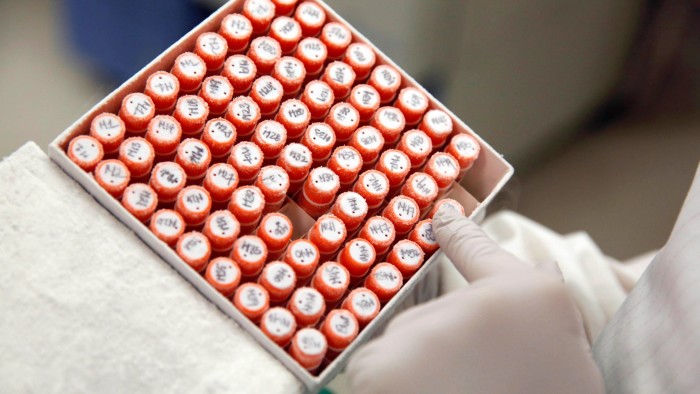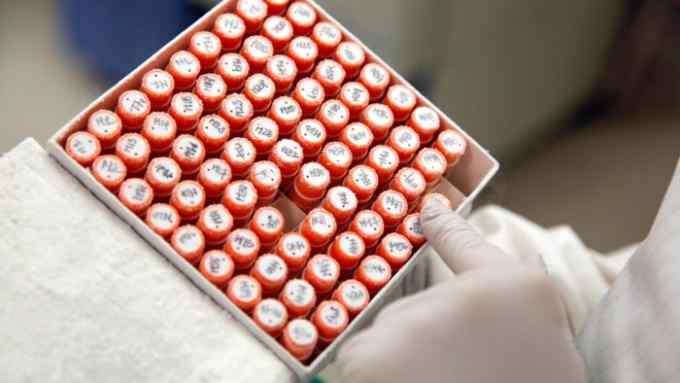The microbiome: a benign infection to help keep disease at bay

Roula Khalaf, Editor of the FT, selects her favourite stories in this weekly newsletter.
A generation or two ago, most people regarded all bacteria as harmful “germs” and would be horrified to know that vast numbers lived inside them.
Today, after one of the biggest changes in popular perception of the human body, the bacteria and other microorganisms within us — a benign infection known collectively as our microbiome, or microbiota — are widely seen as friendly guests that we should welcome, and nourish, for the sake of our health.
Over the past 20 years, medical researchers in universities and industry have devoted huge resources to investigating deficiencies in the human microbiome as a contributor to a vast range of diseases once seen as having nothing to do with pathogens — ranging from autoimmune conditions to mental illness and cancer. By damaging the immune system, microbiome deficiencies can increase vulnerability to more harmful and unwanted infections.
At the same time, business opportunities have opened up in therapies to improve the composition of unhealthy microbiomes, from pills derived from human faeces to prebiotic and probiotic foods and supplements.
Yet, as microbiome experts Alan Walker of Aberdeen university and Lesley Hoyles of Nottingham Trent University pointed out recently, in the journal Nature Microbiology, all the excitement “has unfortunately also brought with it hype and entrenched certain misconceptions.” Their article knocks down 12 myths about the microbiome, ranging from exaggerations about its size and weight to misconceptions about the association between some microbial patterns and disease.
The frequently quoted estimate that the number of microbial cells in our bodies is 10 times greater than the number of human cells turns out to originate from a ‘back of the envelope’ calculation in the 1970s — the actual ratio is closer to 1:1, they write. Another exaggeration is the weight of the human microbiome, frequently estimated at 1kg to 2kg in the scientific literature but actually below 500g in most people.
The microbiome resides mainly in the gut though smaller numbers of benign bacteria live elsewhere in the body and on our skin (the terms microbiome and microbiota are often used interchangeably, though there is a technical distinction between them).
Research linking disease to changes in the balance of bacteria in the microbiome is frequently based on work with rodents that are poor models for people and on “underpowered human studies,” leading to misleading or irreproducible conclusions, says Hoyles. “Attempts to define ‘tipping points’ at which changes in microbiome composition definitively influence disease progression have so far largely failed to generate a clear consensus, due to a lack of consistency between different studies.”
In human studies, it is hard to demonstrate a causal link in which an unhealthy microbiome leads to disease, and not the opposite scenario of disease causing certain bacteria to proliferate in the gut.
The development of pre- and probiotic foods and supplements, such as yoghurt, which promote the growth of healthy bacteria in the gut, drove the first wave of microbiome R&D 20 years ago. But this has tapered off recently as regulators, particularly in Europe, enforce stricter requirements for food producers to provide strong scientific evidence for health claims, Hoyles says.
So far, microbiome therapy — in the form of faecal transplants from healthy donors — has been a proven success in only one disease: excessive growth of the superbug Clostridioides difficile in the gut, says Hoyles. That is a direct manifestation of an unhealthy microbiome. Diseases caused by the microbiome’s secondary effects elsewhere in the body are a greater challenge.
One of the microbiome’s most important — and undisputed — effects is on the host’s immune system. This affects a wide range of common conditions involving inflammation, not only in the gut but elsewhere. The microbes make metabolic molecules that spread throughout the body, either strengthening or weakening its immune defences.
“Cancer treatment is going to be the biggest thing in microbiome research in the next few years,” predicts Hoyles. A recent example was a study published in Nature by scientists at Harvard, showing how differences in gut bacteria alter the body’s response to PD-1 checkpoint blockade, an immunotherapy that has transformed treatment of many cancers. In experiments with mice, they found that specific bacteria affected the activity of two immune molecules that play a key role in determining how effective checkpoint inhibitors are in unleashing the power of the immune system to fight cancer. The next step is to replicate the findings in humans.
But the development path will not be easy, says Francesca Gazzaniga, one of the Harvard research team: “Cancer, the immune system, and the microbiome are astoundingly complex individually but, when you put these systems together, the resulting interplay is exponentially more intricate.”
A quite different demonstration of the microbiome’s ability to affect immune responses was a study at the Fred Hutchinson Cancer Centre in Seattle, published in Immunity. Researchers found that the type of bacteria present in the gut before receiving a bone-marrow transplant for blood cancer determined the risk of developing graft-vs-host disease, in which donor immune cells attack healthy recipient cells.
Again, much more research will be needed before doctors can modulate the complex microbial ecosystem in the gut to improve transplant outcomes. “There is still a lot to understand about how to manipulate the microbiome but our work shows that the pre-transplant microbiome is an important place to focus future research,” says Motoko Koyama, the study leader.

Comments